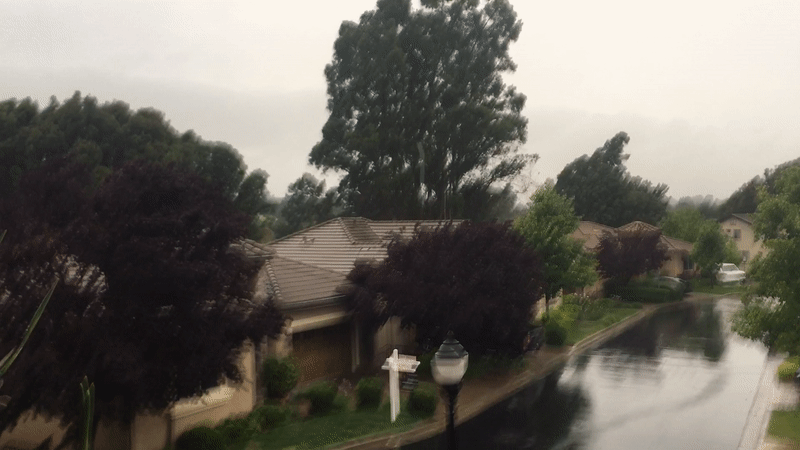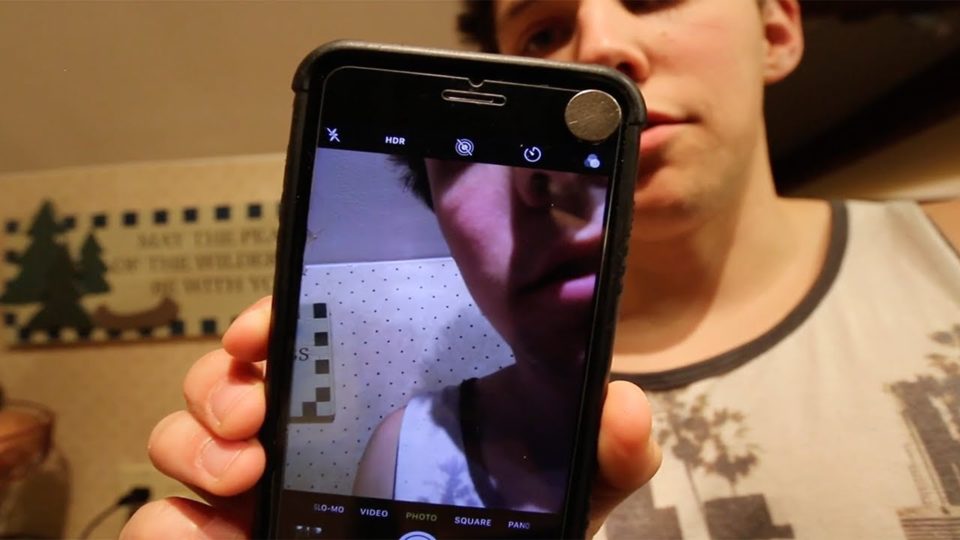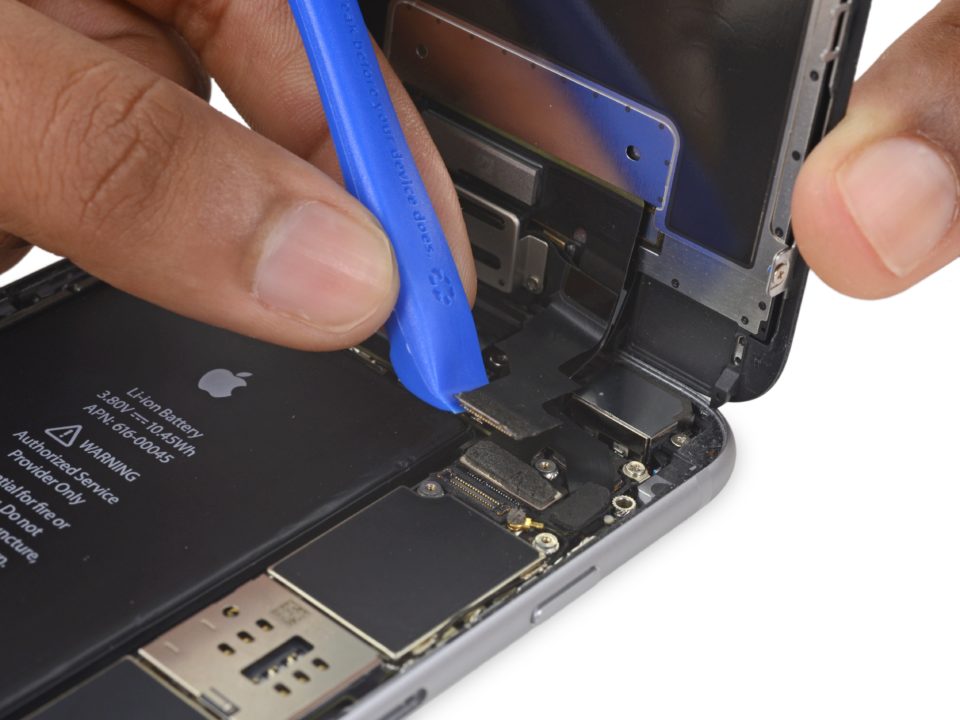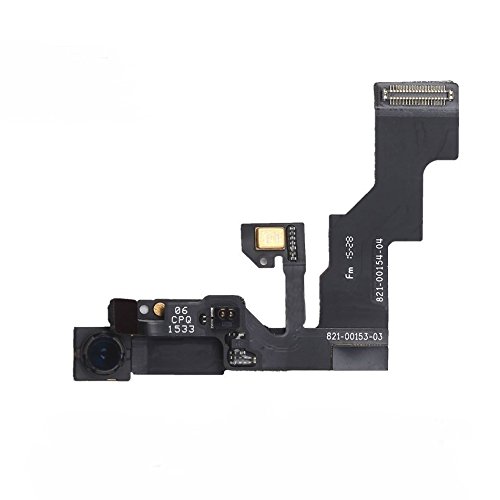How I Fixed My Shaking iPhone 6S Plus Rear Camera

My wife’s phone camera has been very shaky for a few months now. It’s awful. Apple said they couldn’t fix it, so I took it on myself to give it a shot. Good news, I pulled it off. Here’s how.
The problem is supremely annoying — the shaking camera affects both video and stills alike. Videos have a waving, pulsing, jelly-like quality to them, while photos get a heavy dose of motion blur. It only occurs on the rear camera. The front camera works fine.
I started looking into this by reading some forums and determined that there are plenty of others who have experienced the same issue. In fact, the previous model iPhone 6 even had a recall for it. I punched in the serial number to see if we qualified, but unsurprisingly did not, as it’s a different model altogether (although the same issue, and one that Apple should be addressing).
In the same forum, someone suggested the simple fix of putting a magnet next to the camera lens. I tried it, and it worked! It led me to suspect that the shaking is from a failing optical-image-stabilizer function, causing the lens to shift around wildly as it tries to hold position. The magnet seemed to lock it in place, which would work for some scenarios, but not in darker environments where it really helps to have the camera steadying itself electronically.

Regardless, I tucked a small, flat rare-earth magnet behind her case, near the lens, and figured it to be a stopgap for the time being. I was a bit nervous about it erasing credit cards, but it didn’t matter — the magnet popped out shortly afterwards and is now stuck to something that we have no idea about.
So now I was back to the start, but with a slightly better understanding of what may be happening. Sandra and took the phone to the Apple store to see if they would address it. The employee there said he’d never seen this before, but told us that as we were out of the warranty period, it wasn’t something they could do. He also said that on the iPhone 6s Plus, the camera was a non-serviceable unit (which I later determined to be false).
A few weeks later I finally said “what the heck” and decided to take things into my own hands. A quick check on Amazon revealed a number of replacement modules for not much money — all around $20. I ordered one and told myself I’d give it a shot, and if it failed, I’d but Sandra a new phone.
The camera showed up quick, and the phone opened pretty easily using a combination of the iFixit tools and the bits and pieces I have laying around from a couple screen replacements I’ve done in the past (they always include cheap but useful pentalobe and #000 phillips screwdrivers, although the iFixit ones are so much nicer to work with).
I followed the iFixit guide to remove the camera, carefully storing the tiny screws on a magnetic mat. Then I placed the new one into the phone, and screwed it all together. It took about 30 minutes. I turned the phone on, ran upstairs, and let Sandra be the first to test out the new camera.
It didn’t work.
All we saw was a black screen when she turned on the camera app. And what’s worse, the front-facing camera was no longer functioning either. A quick test phonecall then revealed that the earpiece speaker was also out. This was a total failure.
I went back to the desk, reopened the phone, and put the old camera in. It came back to life, still shaking (and audibly so, out of the case). The front camera was still black. I tried the replacement camera one more time, and it was still out. My guess was that the new camera module was bad, and that in the repair process, I fried the front camera and speaker, which seemed to share a single plug. Or, I had wrecked the socket they plug into.
The next day, I ordered a new phone. Well, a refurbished phone, the same model and storage capacity. It was $256 on Amazon and would take a week to arrive.
A day later I started thinking about the “no DOA” guarantee for that replacement camera module, so I sent off for a replacement replacement. I figured, since I spent the $20 and now had a hard-to-use phone, I may as well keep tinkering with it. Plus I had some time until the new phone would arrive.
Just after that, I found a Youtube video I hadn’t seen before about fixing the camera shake in 3 minutes. I thought it must be the magnet solution, but no — it was a video of someone replacing their camera module (as I had attempted) and successfully getting it back together. I realized I wasn’t off in my attempt and started getting new excitement about this.
The replacement module showed up a day after that, and I cracked the phone open again and quickly put it into the phone. I even grew bold and stopped unscrewing the battery clips. Once I got it in the phone and plugged in the connectors, I had to see if it’d work, so I fired up the phone with the case open and the camera pretty loose. To my delight, the camera worked!
I powered down and screwed it closed and turned it on to show Sandra. Only this time, after I pressed the camera icon, the screen came up dark again. Dammit. The phone being closed must be breaking the connection. I wondered if it was a permanent break, so I opened the case and tried to activate the camera again after a restarts. I hadn’t killed it — it came back to life.
With the camera on, I slowly started to close it and noticed that the image would freeze at a certain point. I repeatedly restarted the phone and tried to re-close it over and over to get a sense of what was triggering it. It seemed to be just about the point where the three ribbon cables from the front sensors straightened out.
Then I got an idea — what if I unplugged the non-functioning front camera and closed it again? Would the phone even turn on? Would the screen work? Would it fry the phone? I tracked down which cable goes to the front camera (tip: it’s the first cable) and unplugged it, then powered back up. The phone appeared to be working, including the rear camera. So I closed it slowly, but this time the camera didn’t freeze on me — I got it all the way shut.

It seemed the broken front camera must be interfering with the rear camera somehow (and perhaps the first camera I had installed earlier wasn’t actually DOA). But for the first time in months, the camera had a functional, non-shaky rear camera!
Space inside an iPhone is almost totally non-existent so I had to figure out a creative way to reattach the internal brackets without having the camera module plugged into it. I managed to fold and tuck it enough to get everything closed and gave the phone back to my wife.
The next day, newly determined, I found lots of options for front-facing camera modules online, and even cheaper than the rear cameras. I ordered a $10 option that had decent reviews. It was slated to arrive the day before the new phone, which was becoming my private goal to beat.

Yesterday afternoon, the package was delivered, and around 11pm my time freed up to dive back into the phone.
Despite being half the price, the front module has a number of tiny sensors on it that can be really tricky to align. I followed the iFixit guide and a youtube video for pointers. Still, it was the hardest part of this — two of the tiny sensors have minuscule brackets on them that you have to manually remove and replace, and that’s not made clear in the directions. I also wish that the iFixit guides would go into better detail on the process to reinstall everything, rather than saying “Follow the steps in reverse.”
But with steady patience, after numerous times to try to figure out how to fold the ribbon cable and hold all the pieces stacked in place correctly, I got the module bracket screwed back on, and went for the power button.
It worked. Front camera, rear camera, ear speaker. I screwed it back together and admired my work with numerous calls and Facetimes to myself.
Then I realized the proximity sensor wasn’t working — this is the piece that makes the screen turn off when you hold the phone to your head, so your ear doesn’t start pressing buttons or hang up on the person. It also keeps the screen heat down.
As it was after midnight, I stared at the phone for a few minutes, wondering if it was important to fix it. “Yes, it is,” I said out loud. Then I Googled a bit. As expected, the “easy restart” solutions didn’t work. I figured it was just a misaligned sensor in one of its tiny holes — they’re pretty dang hard to put and keep in place.
I then found a video where someone shows a process of scratching the paint off the inside of the case where the proximity sensor sits, and replacing it with black ink from a marker. It seems like one of those phony phone fixes, but had a lot of views, likes, and comments all thanking the video maker. Perhaps it was legit. I decided to try it too.
It’s hard to say if that’s what solved the issue, or if it was me doing a better job aligning the parts afterward, but once it all went back together, the proximity sensor worked too, and all the camera and speaker modules. It’s as good as new.
Today the replacement phone shows up, and I will turn around and send it right back. I’m thrilled as you can see in the follow-up tweet I posted last night.
